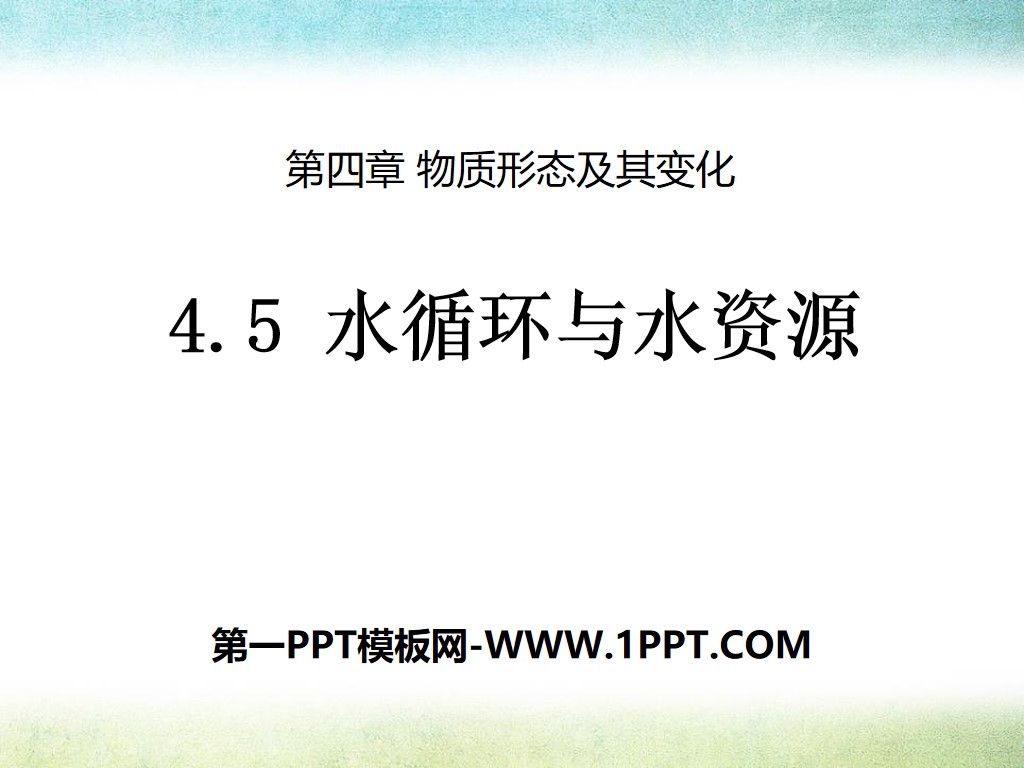
| Category | Format | Size |
|---|---|---|
| Guangdong and Shanghai version of eighth grade physics volume one | pptx | 6 MB |
Description
"How Do We Distinguish Sounds" Sound and Environment PPT Courseware
teaching objectives
1. Know the pitch of a sound, and know the factors that determine the pitch. Understand the differences in waveforms of sounds of different pitches.
2. Understand the factors that affect the pitch of stringed instruments.
3. Cultivate students’ habit of carefully observing experiments and experience the use of control variable methods.
4. Develop the habit of being willing to observe and explore.
Detection Preview Exchange Display
What are sounds, noises, and tones? What factors determine pitch?
What is frequency? Compare waveforms of different frequencies;
Compare the pitch of speech of children, adults, men, and women.
We can hear various sounds in nature, such as birds, frogs, cats, dogs, storms and running water, so on what basis do we classify sounds?
1. Music and noise
1. Musical sounds: Sounds that make people feel happy are called musical sounds.
Features: Good for physical and mental health, regular vibration.
2. Noise: Sound that makes people feel annoying is called noise.
Characteristics: Not good for physical and mental health, vibration is irregular.
2. Tone
1. Pitch: The pitch of a sound is called pitch.
What factors determine pitch? Press a steel ruler tightly on the table, with one end extending out of the edge of the table. Toggle the steel ruler and listen to the sound it vibrates. At the same time, pay attention to the speed of the steel ruler's vibration. Change the length of the steel ruler extending out of the edge of the table and flip it again. .Pay attention to making the amplitude of the two vibrations of the steel ruler roughly the same. Compare the speed of the vibration of the steel ruler and the tone of the sound in the two situations.
2. Frequency: The number of times a sound source vibrates per second is called frequency.
(1) Unit: Hertz, abbreviated as Hertz, symbol Hz.
If a sound source vibrates 30 times per second, its frequency is 30Hz
If a sound source vibrates 300 times per minute, its frequency is 5Hz
3. The height (pitch) of the sound is related to the frequency of the sound source. The greater the frequency of the vibration of the source, the higher the pitch; the smaller the frequency of the vibration of the sound source, the lower the pitch.
4. Issues that need attention:
(1) High-pitched sound is manifested as a high-pitched sound; such as the sound of a mosquito
(2) Low pitch is manifested as a deep voice. like a cow's cry
(3) The propagation speed of sound has nothing to do with the pitch;
(4) The level of the pitch is related to many factors such as the shape, size and properties of the sound-emitting body.
do you know
The frequency range of human voice is 85Hz to 1100Hz;
The frequency range of human hearing is 20Hz to 20000Hz;
Human singing voice ranges from approximately 60Hz to 2500Hz;
Usually the sound frequency of men’s speech is about 90~140Hz;
The frequency of a woman’s voice is about 270~550Hz
In the same music, the pitch of 1, 2, 3, 4, 5, 6, 7, i gradually increases.
4. How to adjust the tone of Xuan instruments?
1. Ask a question: String instruments can play a variety of beautiful music, so how to adjust the tone of Xuan instruments?
2. Conjecture: ①. Maybe it’s related to the thickness of the string?
②. Maybe it’s related to the length of the string?
③. Could it be related to the tightness of the string?
3. Design experiments: ①. Make sure the length and tightness are the same and change the thickness; ②. Make sure the thickness and tightness are the same and change the length; ③. Make sure the thickness and length are the same and change the tightness.
Discussion: A bee flies past your ear and you can hear the sound of its wings vibrating. But when a butterfly flies by your ear, you can't hear it. Why?
Tip: The vibration frequency of butterfly wings is less than 10HZ, while the vibration frequency of mosquito wings is 500-600HZ.
Operation:
Classwork: pages 1, 2, 3, and 4 on p34.
Extracurricular homework: Complete basic training and check by team leader.
Tutorial (preview): a. What is loudness? What factors are related to it? How to compare waveforms of different loudnesses? What is the unit of loudness? What else does loudness have to do with? b. What is the third major characteristic of sound? The application of the three main characteristics of sound in life. Team leader checks.
Keywords: Sound and environment teaching courseware, how do we distinguish sound teaching courseware, Guangdong and Shanghai version eighth grade physics PPT courseware download, eighth grade physics slide courseware download, sound and environment PPT courseware download, how do we distinguish sound PPT courseware download, .PPT format;
For more information about the PPT courseware "Sound and Environment How Do We Distinguish Sound", please click the Sound and Environment ppt How Do We Distinguish Sound ppt tag.
"How do we distinguish sounds (continued)" Sound and Environment PPT Courseware 2:
"How do we distinguish sounds (continued)" Sound and Environment PPT Courseware 2 Teaching Objectives 1. Know what loudness and timbre are. Know the factors that determine loudness. Understand the units of loudness. 2. Application of timbre. 3. Understand how sounds of different loudness and timbre behave on waves..
"How do we distinguish sounds (continued)" Sound and environment PPT courseware:
"How do we distinguish sounds (continued)" PPT courseware on sound and environment 1. Loudness of sounds Sounds are not only high and low, but also strong and weak. In physics, the intensity of sound perceived by the human ear is called loudness. Loudness is commonly known as volume or volume. Activity 1: Explore...
"How Do We Distinguish Sounds" Sound and Environment PPT Courseware 2:
"How Do We Distinguish Sounds" Sound and Environment PPT Courseware 2 Learning Objectives 1. Understand one of the characteristics of sound, pitch 2. Know that the pitch of a sound is related to the vibration frequency of the sound emitter, and know how to adjust the pitch of a stringed instrument 3. Understand the sounds of different pitches The difference in waveform...
File Info
Update Time: 2024-06-29
This template belongs to Physics courseware Guangdong and Shanghai version of eighth grade physics volume one industry PPT template
"How Do We Distinguish Sounds" Sound and Environment PPT Courseware Simple campus recruitment activity planning plan summary enterprise and institution recruitment publicity lecture PPT template is a general PPT template for business post competition provided by the manuscript PPT, simple campus recruitment activity planning plan summary enterprise and institution recruitment promotion Lecture PPT template, you can edit and modify the text and pictures in the source file by downloading the source file. If you want more exquisite business PPT templates, you can come to grid resource. Doug resource PPT, massive PPT template slide material download, we only make high-quality PPT templates!
Tips: If you open the template and feel that it is not suitable for all your needs, you can search for related content "How Do We Distinguish Sounds" Sound and Environment PPT Courseware is enough.
How to use the Windows system template
Directly decompress the file and use it with office or wps
How to use the Mac system template
Directly decompress the file and use it Office or wps can be used
Related reading
For more detailed PPT-related tutorials and font tutorials, you can view: Click to see
How to create a high-quality technological sense PPT? 4 ways to share the bottom of the box
Notice
Do not download in WeChat, Zhihu, QQ, built-in browsers, please use mobile browsers to download! If you are a mobile phone user, please download it on your computer!
1. The manuscript PPT is only for study and reference, please delete it 24 hours after downloading.
2. If the resource involves your legitimate rights and interests, delete it immediately.
3. Contact information: service@daogebangong.com
"How Do We Distinguish Sounds" Sound and Environment PPT Courseware, due to usage restrictions, it is only for personal study and reference use. For commercial use, please go to the relevant official website for authorization.
(Personal non-commercial use refers to the use of this font to complete the display of personal works, including but not limited to the design of personal papers, resumes, etc.)
Preview





















